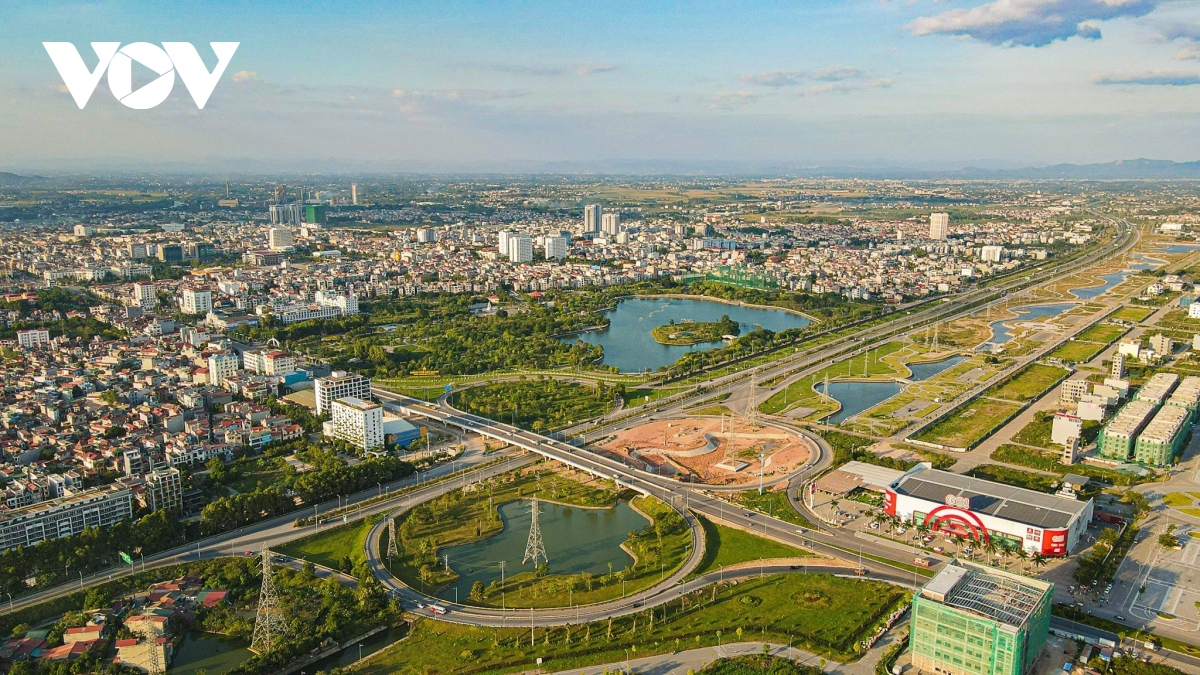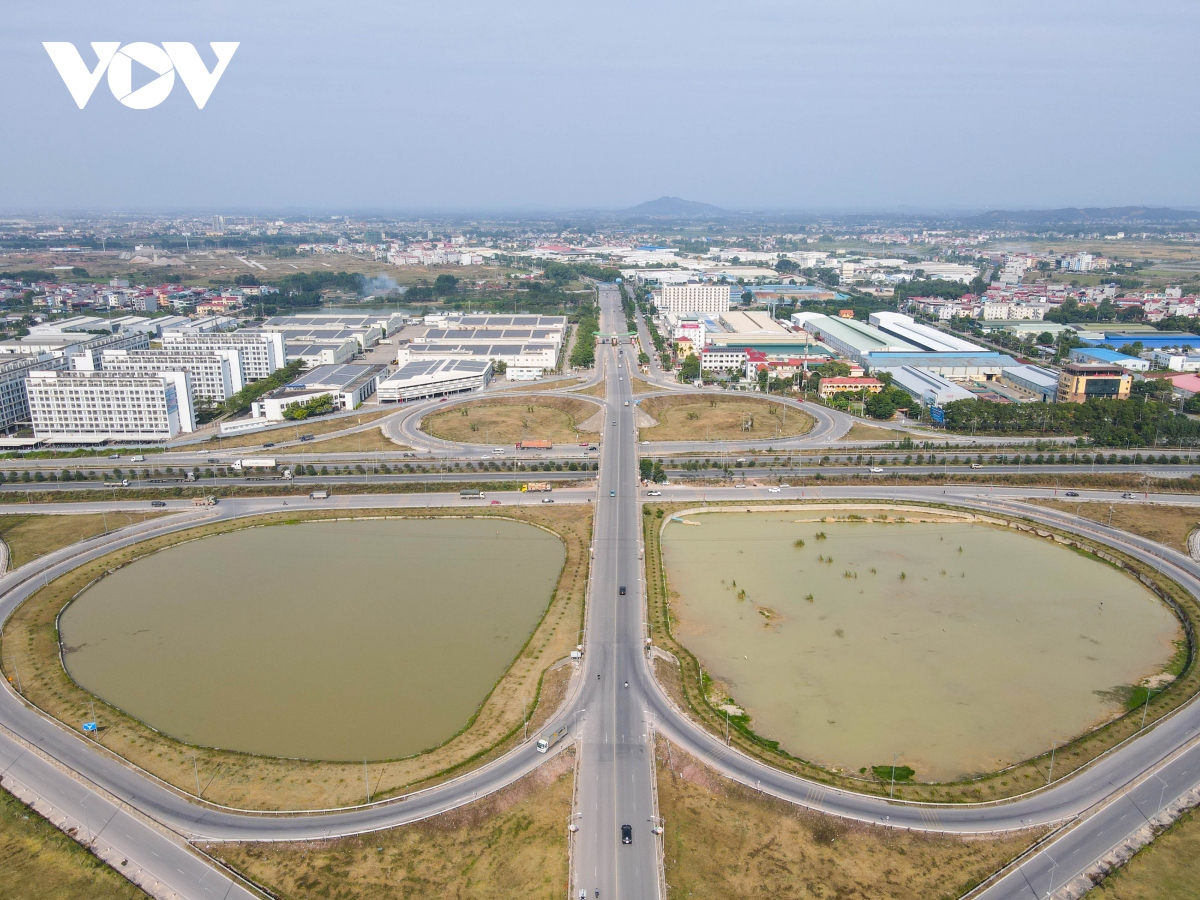The adjustment of the zoning plan for Zone 2, Bac Giang urban area, Bac Giang province, with a scale of 1/2,000, aims to specify and plan at the upper level; connecting architecture, landscape and infrastructure of component projects; promoting the potential advantages of the expanded area, investing in construction and completing the framework infrastructure of the urban area according to the plan, ensuring the criteria for transforming the communes in the area into wards.
The planned area belongs to the administrative boundaries of the following wards and communes: Le Loi, Dinh Ke, Tan Tien, Dinh Tri, Huong Gian, Xuan Phu and Tan An Town. The boundaries are limited to the northeast by Thai Dao commune (Lang Giang district); to the south and southwest by the Thương river dyke; to the east by the planned road (belonging to Tan An town, Yen Dung district); and to the northwest by the Hanoi-Lang Son expressway.

Bac Giang City from an aerial view
The planning area covers approximately 2,247 hectares; the estimated population by 2030 is about 66,000 people, and by 2045 is about 105,000 people. In terms of characteristics, this is a complex urban area, a multi-functional new center of Bac Giang city, with an urban ecological space connected to the landscape of green trees, water bodies, and urban public service facilities.
Next is Zone 6 – the driving force for the development of the eastern gateway area of the city. This zone has the characteristics of a supporting urban area connected to the agricultural gateway, the source of the Man River flowing into the Luc Nam River, the low hills of Lao Ho, Quynh Son, and the Tay Yen Tu tourist area. The central complex service area supports the surrounding industrial zones.
The planning area belongs to the administrative boundaries of Tan An town and the communes: Lao Ho, Xuan Phu, and part of Huong Gian commune. The boundaries are limited to the north by Thai Dao commune, Lang Giang district; to the south by the Thương river; to the east by Quynh Son commune, Lang Son and Luc Nam districts; and to the west by Huong Gian commune and the Thương river.
The research area for planning is approximately 2,048 hectares; the estimated population by 2030 is about 40,000 people, and by 2045 is about 60,000 people.
On the same day, the People’s Committee of Bac Giang province also approved the planning tasks for Zone 8. This is a southern gateway urban area, an important transportation hub connecting Bac Ninh, Hai Duong, and Quang Ninh provinces. The urban area will be a new economic development center of Bac Giang city with an attractive and modern urban ecological space.

The People’s Committee of Bac Giang province plans 3 sub-zones with a total area of over 8,600 hectares
Zone 8 is located within the administrative boundaries of Nham Bien town and the communes: Yen Lu, Canh Thuy, Tien Dung. The boundaries are limited to the north by the foot of Nham Bien mountain and the Thương river; to the west and south by the Cau river and Que Vo town, Bac Ninh province; to the east by Duc Giang commune and Tu Mai commune.
The research area for planning is approximately 4,378 hectares; the estimated population by 2030 is about 60,000 people, and by 2045 is about 90,000 people.
The sub-zone will have provincial road 398, North-South axis 1,2 (according to the Planning Law) determined to be both interregional transportation routes and main urban axes, prioritizing the development of high-rise works, connecting axes of central functional areas, key areas, and regions.
These three sub-zones are part of the Bac Giang urban development program until 2045, which was also approved by the Provincial People’s Council earlier this year, with an expected investment capital of over 149,000 billion VND.












